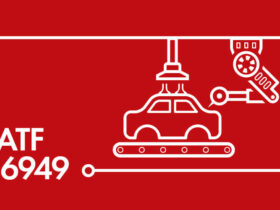In the bustling economic landscape of Singapore, Small and Medium-sized Enterprises (SMEs) play a pivotal role in driving innovation, creating employment opportunities, and contributing to the nation’s GDP.
As Singapore continues to position itself as a global business hub, it becomes imperative to comprehend the regulatory frameworks that govern the operations of these SMEs.
One crucial aspect that SMEs must be aware of is the turnover limit, a threshold that impacts their eligibility for various benefits and exemptions.
This article delves into the turnover limit for SMEs in Singapore, its significance, and the implications it carries.
Defining SMEs in Singapore
Before delving into the turnover limit, it’s essential to understand what constitutes an SME loan in Singapore.
The classification of SMEs is primarily based on two factors: annual sales turnover and the number of employees.
Turnover Limit for SMEs
- Micro Enterprises: Businesses with an annual sales turnover of up to SGD 1 million.
- Small Enterprises: Businesses with an annual sales turnover between SGD 1 million and SGD 10 million.
- Medium Enterprises: Businesses with an annual sales turnover between SGD 10 million and SGD 100 million.
It’s important to note that these turnover limits are subject to change based on government policies and economic conditions.
Therefore, it’s advisable to refer to the latest information from authoritative sources like the government’s official SME portal or regulatory bodies for the most up-to-date figures.
The Significance of Turnover Limit
The turnover limit for SMEs in Singapore holds immense significance, acting as a guiding threshold that shapes policies, initiatives, and support mechanisms to ensure sustainable growth for these businesses.
Understanding the importance of turnover limits allows SMEs to make informed decisions, access targeted resources, and maximize the benefits that come with their classification.
Precision in Resource Allocation
SMEs form a diverse ecosystem, ranging from startups and innovative ventures to established small businesses. The turnover limit serves as a filter that helps policymaker’s direct resources where they are most needed.
By segmenting SMEs based on their turnover, the government can allocate funds and incentives more precisely, catering to the unique challenges and growth trajectories of businesses at different stages of development.
Customized Support and Benefits
Each stage of an SME’s growth journey demands specific types of support. The turnover limit enables authorities to design assistance programs that address the distinct needs of micro, small, and medium-sized enterprises.
For instance, micro enterprises might require initial capital injection and mentorship, while small enterprises might benefit from technology adoption grants and market entry support.
Medium-sized enterprises could seek resources for scaling up and international expansion. The turnover limit thus allows businesses to receive customized support that aligns with their growth phase.
Mitigation of Information Asymmetry
Information and knowledge gaps are common challenges faced by SMEs, particularly those in their early stages. The turnover limit serves as a beacon that guides entrepreneurs towards relevant resources and assistance.
Startups and micro enterprises might lack the resources to access specialized information, but the turnover limit enables them to identify programs and networks tailored to their size.
This mitigation of information asymmetry empowers SMEs to make informed decisions about sme financing, innovation, market entry, and compliance.
Encouragement of Responsible Growth
Exceeding the turnover limit signifies a transition into a higher growth phase. This transition comes with increased responsibilities, regulatory obligations, and market expectations.
By adhering to the turnover limit, SMEs are encouraged to grow at a pace that aligns with their capabilities, ensuring that growth is sustainable and manageable. This approach prevents premature expansion that could strain resources and undermine long-term viability.
Promotion of Innovation and Adaptability
Innovation is often the cornerstone of SME success. The turnover limit encourages SMEs to continuously innovate and adapt to changing market dynamics.
When businesses know that they can access financial assistance, grants, and incentives by staying within the turnover limits, they are motivated to focus on creative solutions, technological advancements, and process improvements.
This culture of innovation contributes to the overall competitiveness of SMEs and the broader economy.
Inclusion and Diversity
SMEs encompass a wide range of industries, from technology and manufacturing to services and retail. The turnover limit ensures that businesses of varying natures can benefit from tailored support.
This inclusivity allows for a diverse and vibrant SME landscape, where businesses from different sectors contribute to economic growth.
It also facilitates cross-industry collaborations, knowledge sharing, and a balanced representation of businesses in the economy.
Fostering Resilience
The turnover limit indirectly fosters resilience by encouraging SMEs to manage their resources effectively.
Businesses that strategically plan to stay within the turnover limit are better equipped to weather economic uncertainties and fluctuations. They are less likely to overextend themselves financially and are more likely to maintain stable operations during challenging times.
This resilience contributes to the overall stability of the SME sector and the economy as a whole.
Benchmark for Aspirational Growth
For many SMEs, staying within the turnover limit is not the end goal. It’s a stepping stone towards aspirational growth and increased market presence.
The turnover limit provides a tangible benchmark that businesses can strive to exceed. Meeting and then surpassing the limit becomes a signal of achievement and a validation of a business’s potential for expansion and success.
Implications for SMEs
- Growth Strategies
The turnover limit influences an SME’s growth strategies. Crossing the threshold from a micro to a small enterprise or from a small to a medium enterprise signifies a significant expansion in operations.
SMEs need to plan for this growth, which might involve increased investments, infrastructure enhancement, and human resource management.
- Financial Management
SMEs must carefully manage their finances to stay within the turnover limit that defines their category. Crossing the limit could lead to changes in tax liabilities, regulatory requirements, and overall business operations.
Conversely, remaining comfortably within the category’s limits might mean missing out on certain growth opportunities.
- Competitive Edge
SMEs that strategically manage their growth to remain within their current category can enjoy certain advantages.
They can tailor their operations to the specific benefits and regulations applicable to their category, giving them a competitive edge in their niche.
Navigating the Turnover Limit
- Regular Monitoring
SMEs should consistently monitor their sales turnover to ensure they are aware of any impending changes in their categorization. This proactive approach allows for better planning and adaptation to regulatory changes.
- Scalable Operations
SMEs with aspirations for growth should design their operations to be scalable. This means having flexible processes, robust infrastructure, and human resources strategies that can accommodate an increase in turnover without causing operational disruptions.
- Expert Consultation
Given the complexity of regulations and their potential impact on business operations, SMEs should consider seeking professional advice. Accountants, legal experts, and business consultants can provide insights into compliance requirements and growth strategies.
Conclusion
The turnover limit for SMEs in Singapore is a fundamental aspect that shapes their growth trajectories, financial management, and regulatory compliance.
Understanding the categorization criteria and its implications is crucial for SMEs to effectively navigate their journey from micro to medium enterprises.
As Singapore continues to foster a supportive environment for businesses, SMEs must stay informed about the latest guidelines and adapt their strategies accordingly.
By doing so, they can harness the benefits of their categorization and contribute significantly to Singapore’s dynamic economic landscape.












